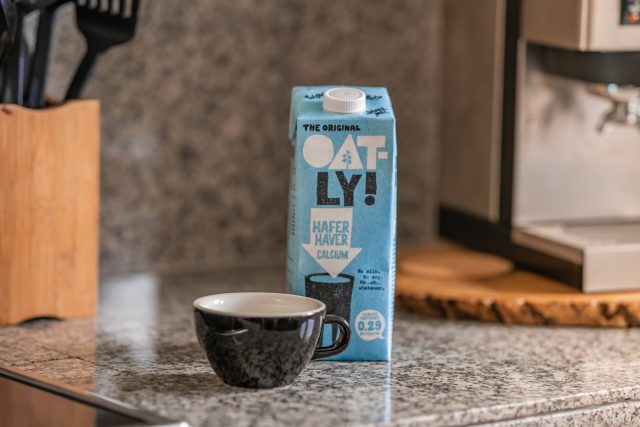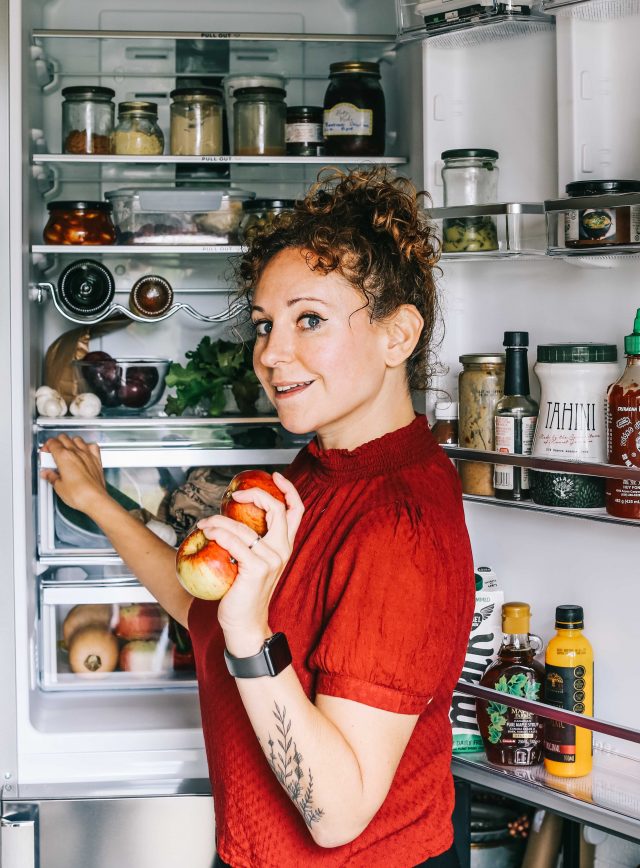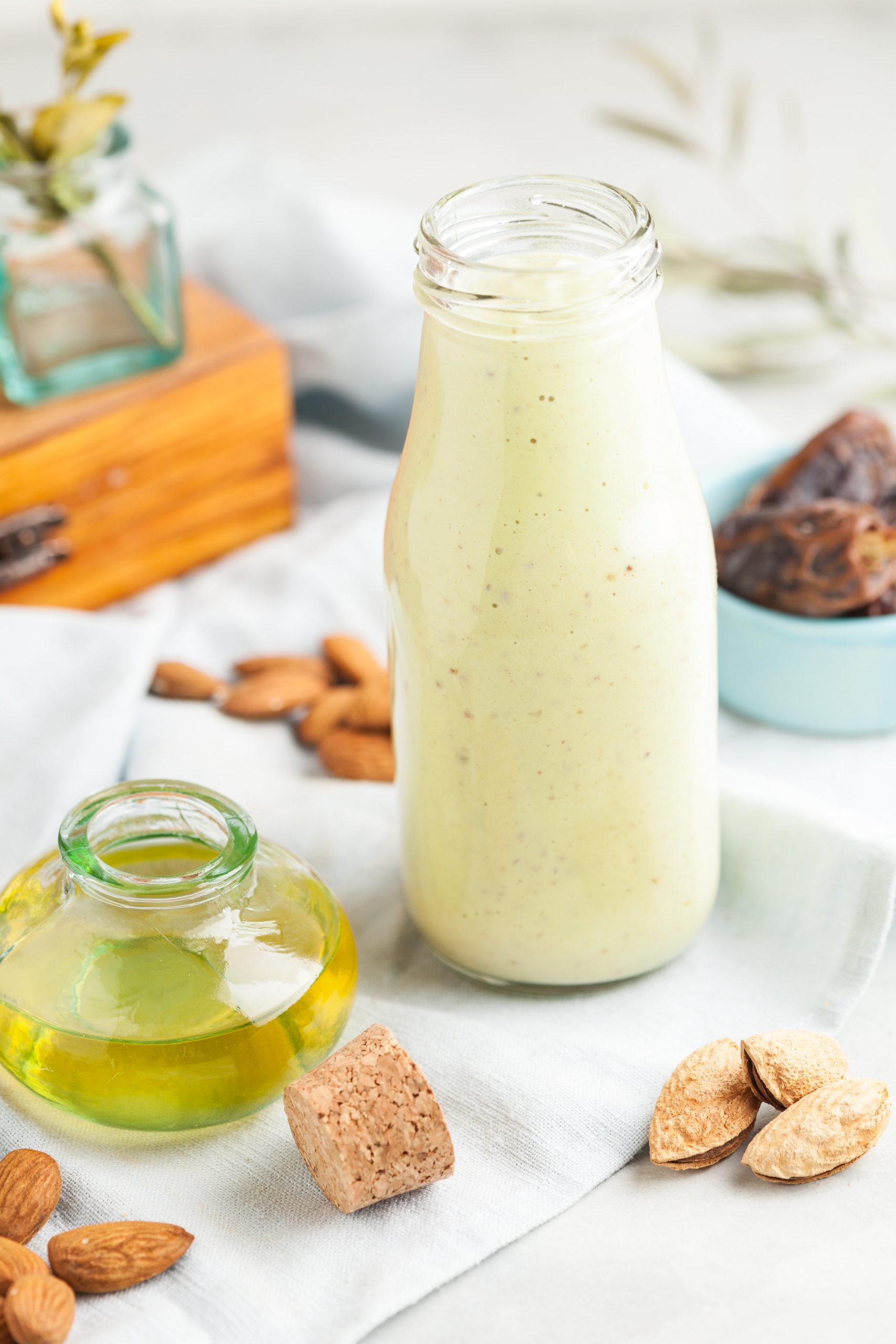Is anyone even drinking cow’s milk anymore? With so many of us turning away from the original ‘white stuff’ due to dairy intolerances or for ethical, health or environmental reasons, the no-cow milk industry is flourishing.
Market researchers Global Market Insights project global plant milk market revenue to hit US$21 billion by 2026, citing lactose intolerance, diet consciousness and increasing adoption of a vegan diet as the main factors.
In the UAE, sales of soy milk and soy drinks alone were Dh2.13 million in 2019, an increase of 7.82 percent over 2018, and with so many other plant-based options now more readily available in the Middle East, both almond milk and oat milk have nudged soy milk out of the top spot.
Plant-based options
The most popular is almond milk which has over 60 percent of the total market; in second place is oat milk followed by soy, and this is reflected in the fact these three are definitely the easiest to grab with your regular shop or when ordering your latte. Other alternative options include coconut, rice, hemp seed, pea protein, cashew and hazelnut milk. But how do you choose the right plant milk for you? It probably comes down to what factors most affect your choice, such as taste, health benefits, cost and of course environmental impact.
What is the cost to the planet?
Whichever plant milk you choose, the environmental impact is less than the dairy option, explains Mark Driscoll, a sustainable food systems consultant with his own consultancy in the UK..
“A 2018 study by researchers at the University of Oxford in England showed that producing a glass of dairy milk results in almost three times more greenhouse gas emissions than any plant-based milk and requires nine times more land,” he says. “All plant-based milks are better on nearly all indicators of sustainability – water and land usage, carbon dioxide emissions, wastage – than dairy milk. Producing a glass of dairy milk every day for a year requires 650 square meters of land – the equivalent of two tennis courts and more than 10 times as much as [to produce] the same amount of oat milk.”

Ranking plant milks
It’s tempting to open a carton of ‘not milk’ and feel pretty good about oneself. But like everything that involves a production line and a supply chain, it’s a lot more complicated than we think. While no version approaches the energy requirement to produce cow’s milk, some require a lot more than others. And almost all packaged milks contain additives and chemicals, including emulsifiers, stabilizers and preservatives.
Almond milk
Almond milk may be the stand-out favourite among consumers, most probably due to its creaminess and slightly sweeter taste, but it’s not sustainable. One of the issues is the stressful impact on honeybee populations in the United States, where the bulk of it is produced.
The bees must be trucked from all across the country to California, so they can pollinate the one million acres of trees there that produce almonds. Then there are the hefty water requirements.
“Almond milk requires more water to produce than soy or oat milk – more than a typical shower,” explains Driscoll.
Rice milk
Rice milk doesn’t come off much better.
“Rice milk is also comparatively thirsty, requiring 54 litres of water per glass,” reveals Driscoll. “However, it’s worth noting that both almond and rice milk still require less water to produce than the typical glass of dairy milk. Also, almond milk has virtually no cholesterol and is very high in antioxidants.”
Cashew milk
Another alternative to almond is cashew milk, which has almost as many nutrients but has other issues, not least the poor working conditions at production facilities in India and Vietnam. Cashew shells contain a natural toxin similar to poison ivy that can cause burns and scarring if workers aren’t protected properly. So be sure to check the source of the milk.
Soy milk
The biggest benefit of soy milk is the high protein content compared with other plant milks. It has just one gram less of protein per glass than dairy milk (7 grams vs 8 grams of protein), although dairy provides better calcium absorption.
Soy milk is also a great source of Omega-3 fatty acids and vitamins A, B-12, and D but where it falls down is the link to the destruction of the Amazon rainforest and illegal deforestation. But Driscoll isn’t convinced.
“This is misleading because much of the soya from South America is used as feed in the livestock industry, not turned into milk, while soya for human consumption tends to be sourced from North America, Europe or Asia,” he explains. “Soybeans also use less than one-tenth of the water used in the process of making almond milk, making them a good eco-friendly alternative and they produce far fewer greenhouse gases than dairy.”
So the answer again is to check the source of your soy milk.
Oat milk

This plant milk has overtaken soy milk and we can see why: it’s tasty, contains good amounts of protein and fibre and is one of the most sustainable options.
“According to a life cycle assessment (LCA) study by plant milk brand Oatly, the production of its oat milk results in 80 percent lower GHG emissions, 80 percent less land use and 60 percent less energy use compared to cow’s milk,” says Driscoll. “One issue is that a recent report showed oats are often contaminated with glyphosate at levels considered unsafe, because farmers spray Roundup (weedkiller) on the crop right before harvest.”
Other ‘cleaner’ plant milks
Hemp
“Hemp is fast-growing, thrives in a variety of soils and doesn’t require fertilizers or pesticides,” says Driscoll. “It is also what I would term a ‘regenerative crop,’ with long tap roots capturing carbon dioxide from the atmosphere and returning it to the soil. It can grow with very little water and few pesticides or herbicides.”
Pea
Pea milk is high in protein, calcium, vitamin D and iron and also has environmental benefits. Being a leguminous crop, it can infuse nitrogen into the soil, reducing the need for fertilizers.
Coconut
Another plant milk to bear in mind. “Water use is relatively low and there’s lots of health benefits including improved digestion, lowered blood pressure and cholesterol,” says Driscoll.
Where to get a plant-based milk in the UAE
Cafes and restaurants in the Emirates have quickly adopted dairy-free options for their hot drinks and even in some of their recipes for curries, desserts and baking. Head to Nightjar on Dubai’s Alserkal Avenue for the creamiest oat milk flat white, or to 1762 for a latte, but here you need to go with soy milk for that perfect thick texture and sweet taste.

Abu Dhabi’s Sanderson’s (now also open in Dubai’s Sustainable City) make their own nut milks for your beverage preference and also whip up a coconut milk cream for their cashew and coconut hotcakes.
Wild and the Moon is the place for a whole menu of ‘NUTMYLKS’ – healthy, homemade dairy alternatives combining sprouted almonds with everything from herbs, spices, coconut, charcoal, oats and matcha, as well as a full-on smoothie menu using homemade almond ‘mylk.’
DIY plant-based milk
There’s only one way to control exactly what goes into your plant milk – and avoid added sugars and oils – and that’s to do it yourself.

In her latest vegan cookbook, Rebel Recipes, author Niki Webster says it’s easy to make your own plant-based mils and shares three of her top nut milk recipes:
Almond or hazelnut milk recipe:
Ingredients:
- 100g almonds or hazelnuts (soaked for at least 4 hours or overnight)
- 1 litre filtered water
- 2 or 3 pitted medjool dates or 1tsp maple syrup
- Pinch sea salt
Method:
- Drain and rinse the soaked nuts.
- Add the nuts, dates, sea salt and water into a high speed blender or nut milk maker.
- Blend well for 30 seconds to 1 minute until milk is smooth and creamy.
- You can strain through a nut milk bag or pour straight into glass bottles for storage in the fridge if you don’t mind the pulp in your milk, which makes it a bit thicker.
- For a chocolate option, add 2 tbsp raw cacao powder
Cashew milk recipe:
Ingredients:
- 100g cashews (soaked for at least 4 hours)
- 1 litre filtered water
- 1 tbsp maple syrup — optional
- 1 tsp vanilla extract — optional
- Pinch sea salt
Method:
- Drain and rinse the soaked nuts.
- Add the nuts, dates, vanilla, sea salt and water into the high speed blender or nut milk maker.
- Blend well for 30 seconds to 1 minute until milk is smooth and creamy.
- You can strain through a nut milk bag or pour straight into glass bottles for storage in the fridge. (Again, the pulp makes the milk a bit thicker.)
Oat milk recipe:
Ingredients:
- 100g rolled oats
- 1 litre filtered water
- 1 tbsp maple syrup — optional
- 1 tsp vanilla essence — optional
- small pinch salt — optional
Method
- Put your rolled oats into a large container and cover with water. Soak for 20 minutes.
- Drain the soaking liquid and rinse the oats at least three times in fresh water.
- Add the rinsed oats, water, dates, vanilla and salt into a high speed blender.
- Blitz for approximately a minute until thick and creamy.
- Add more water for a thinner milk.
- Now strain the liquid through a nut milk bag or slice.
- Transfer to a glass jar and store in the fridge.






